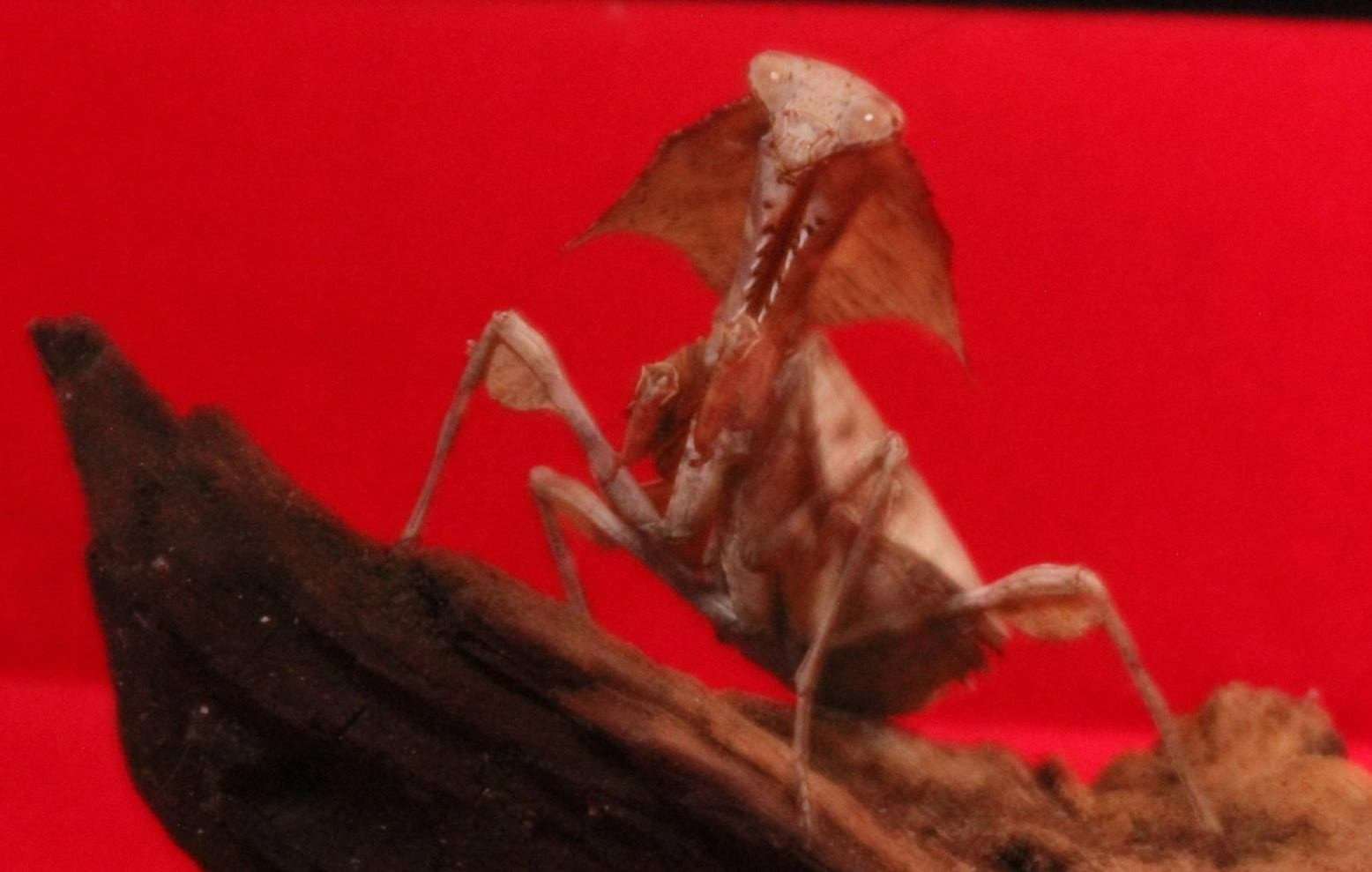
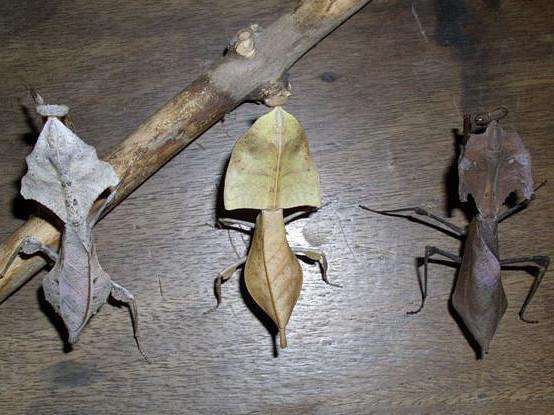
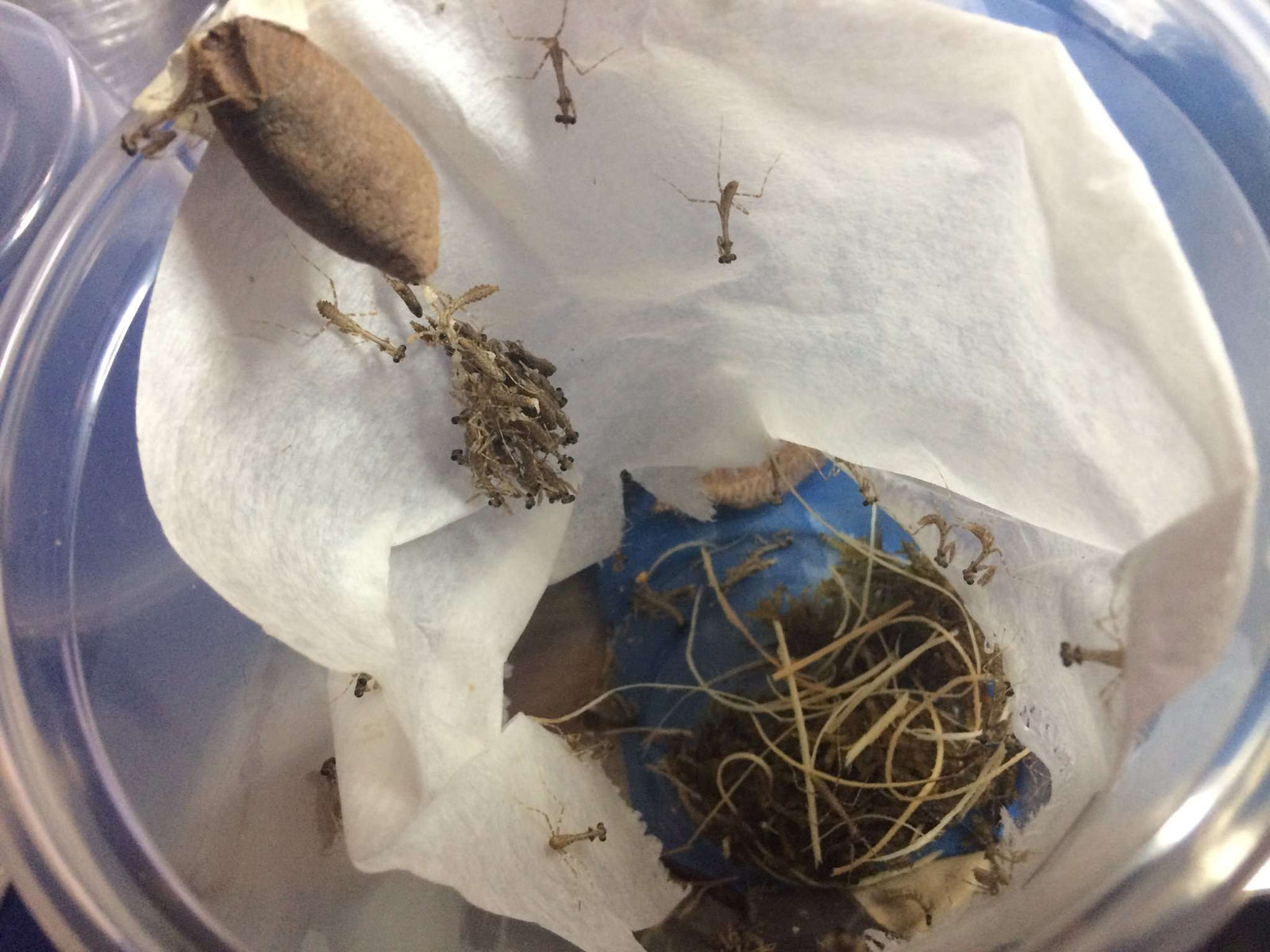
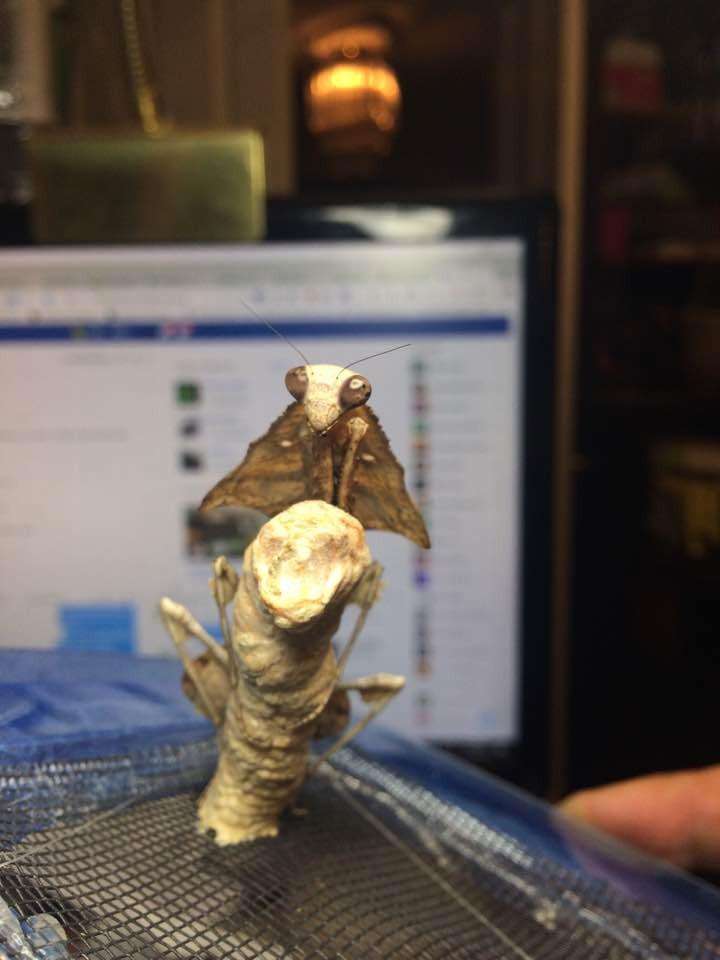
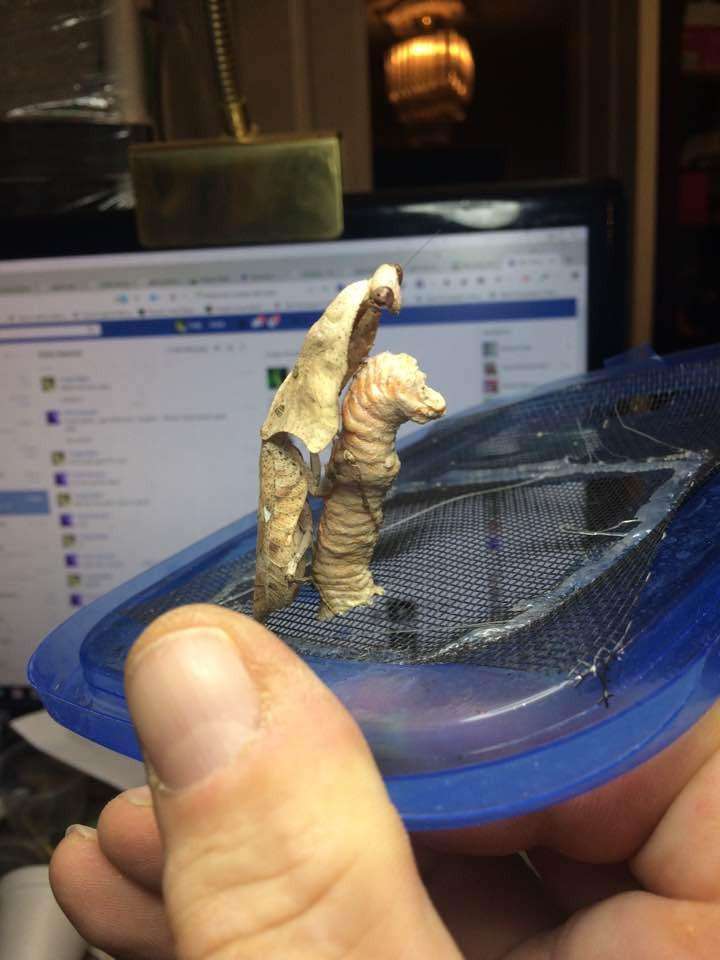
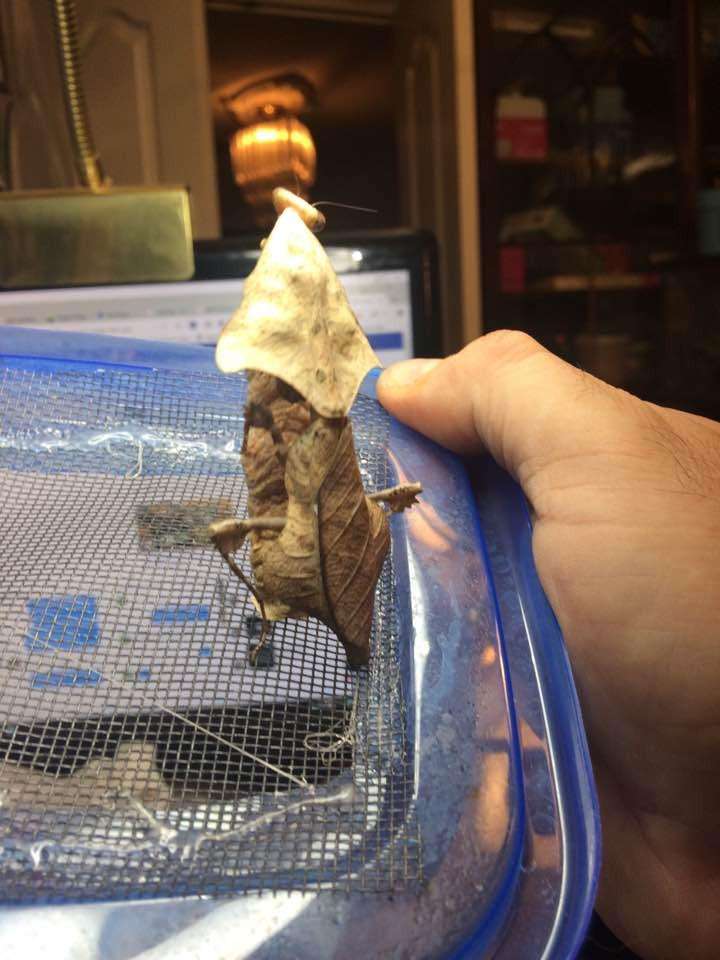
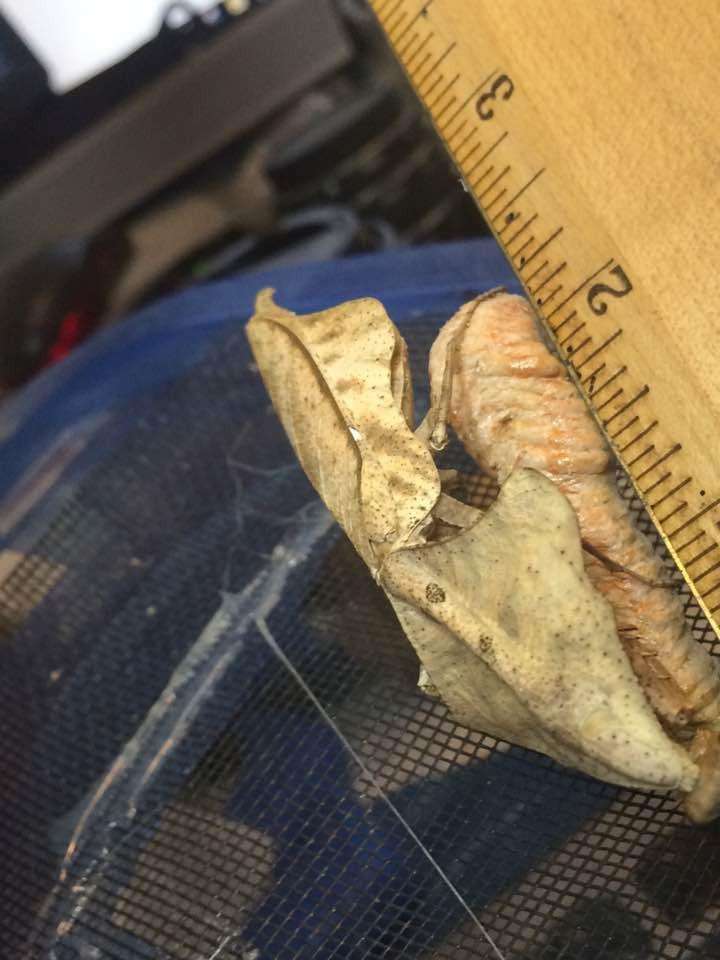
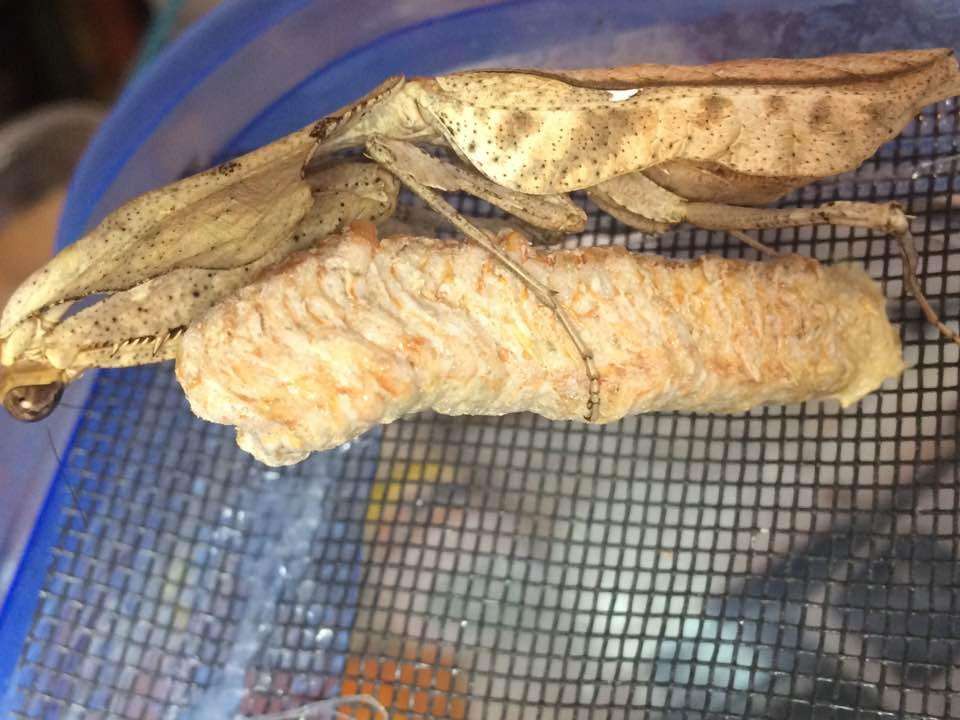
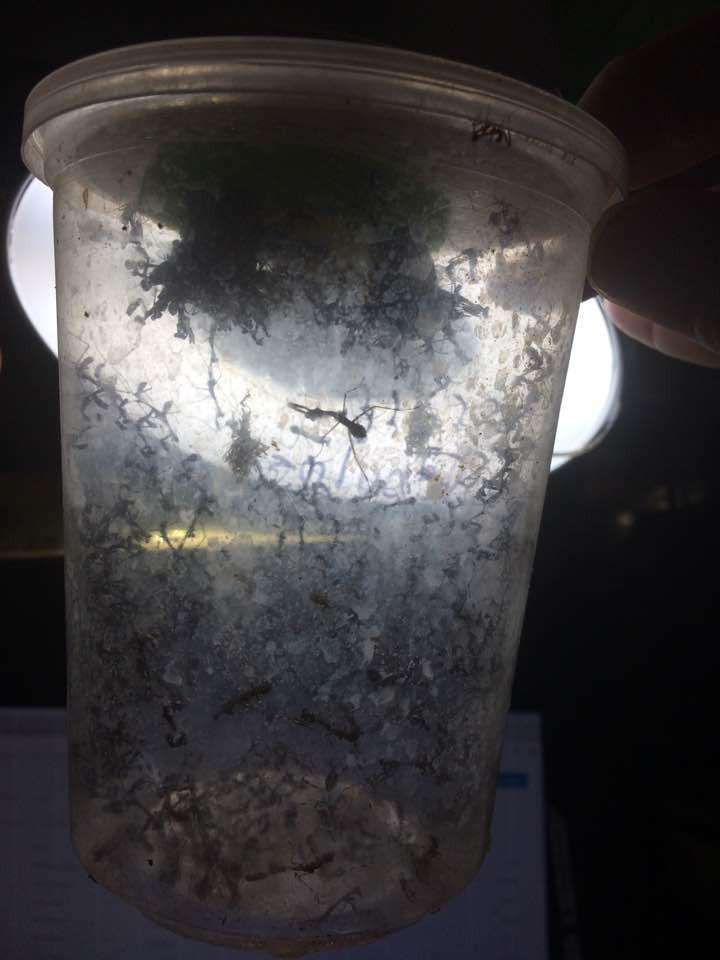
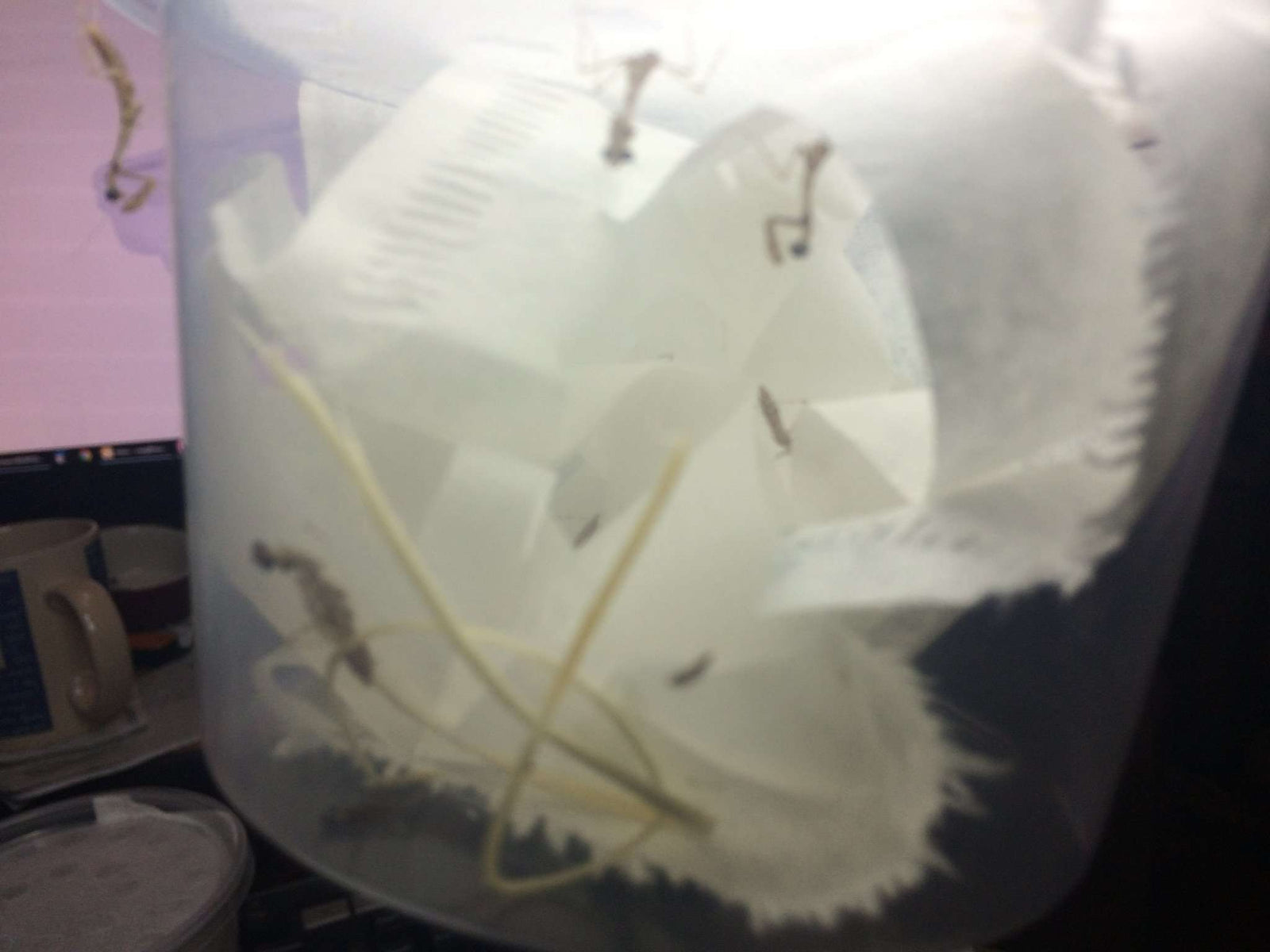
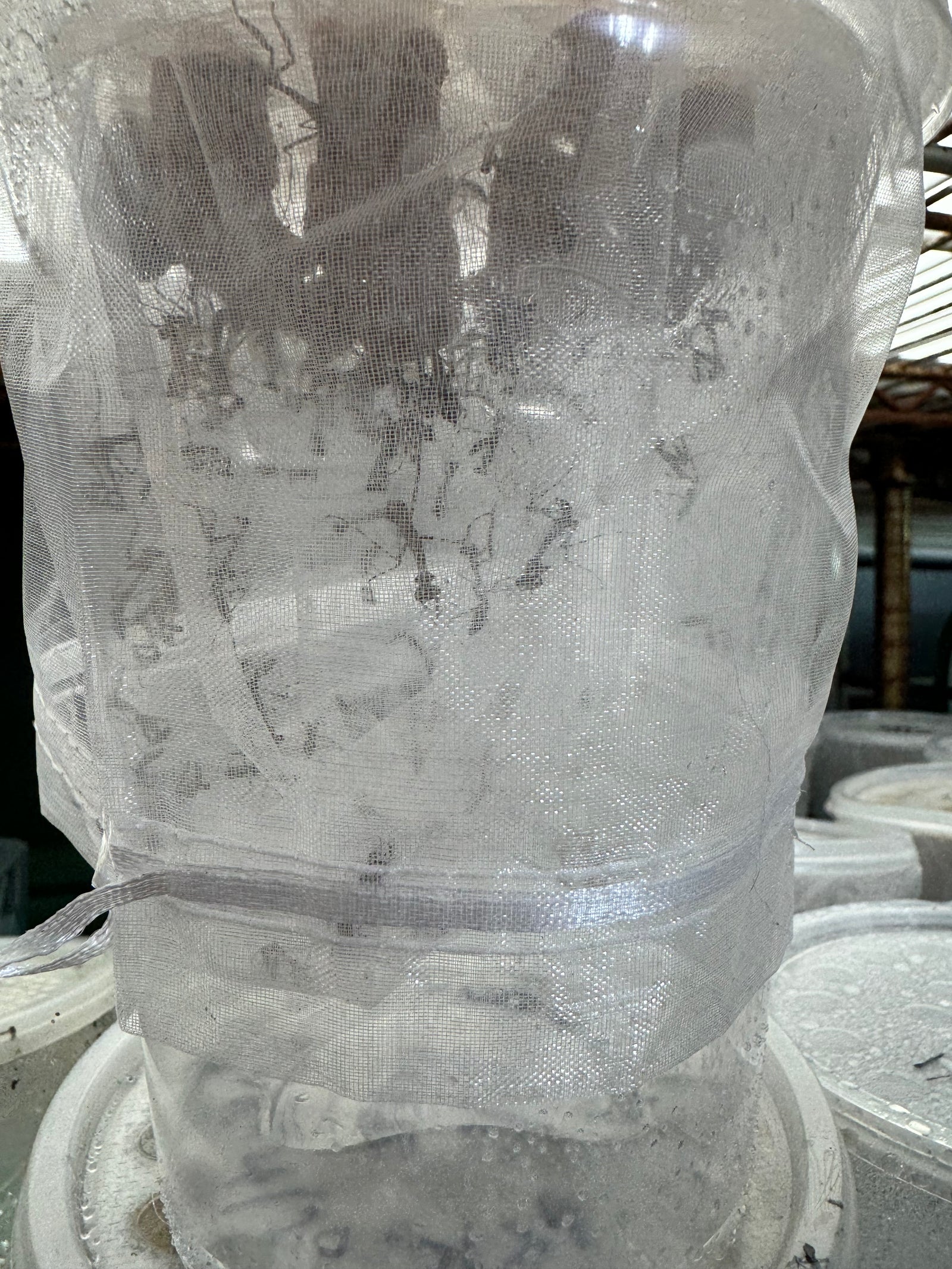
Deroplatys lobata live Dead leaf Praying mantis
$42.50 - $150.00
Deroplatys lobata, commonly named Malaysian dead leaf mantis or dead leaf mantis, is a praying mantis inhabiting Thailand, Java, Borneo, Indonesia, Sumatra, and the Malay Peninsula.
This mantis mimics dead leaves. Females are about 65 to 70mm long, and males are about 45mm long. 1st instar nymphs are up to 15mm long, and 2nd instar nymphs are about 21mm long when their abdomens are expanded. Their coloring ranges from dark gray to light-mottled gray. They also possess a broad prothorax that looks ripped and crumpled like a leaf.[5] Females have a wider shield than males in the 4th instar stage. Males have a slender body and diamond-shaped shields.[6]
Sexual Dimorphism
Due to sexual dimorphism typical of mantises, the male is much smaller. Adult females are about 65mm to 70mm long, while adult males are about 45mm long. 3rd instar nymphs cannot be sexed by counting the segments on the bottom of the abdomen because, unlike most praying mantises, 8 segments are visible in all of the 3rd instar nymphs, and this is also true when they are in the 1st, 2nd instar stage. Their leaf shapes look just about the same at those stages. 4th instar nymph and up their leaf shapes look different from each other and get more different with each molt. 6 segments are seen on females while eight on males at the 4th instar and up.
Deroplatys lobata 4th instar nymphs, female on the left, male on the right. At this stage, females are usually slightly larger than males.
Difference in the thorax at the 4th instar. Deroplatys lobata 4th instar nymphs,
In Captivity
Deroplatys lobata are commonly kept in captivity. Three other species in the genus Deroplatys are kept in captivity: Deroplatys desiccata, Deroplatys truncata, and Deroplatys trigonodera.
Habitat
Deroplatys lobata lives on the ground around dead leaves and bushes in damp areas and tropical rainforests.
| Range | Malaysian rainforests. |
| Type | Arboreal. |
| Diet | Babies eat flightless fruit flies, pinhead crickets, and other small insects, while adults eat crickets, moths, flies, and other large insects. |
| Full Grown Size | Females get up to 5.5 inches. Males get up to 3 inches. |
| Growth | Fast speed. |
| Temperature | 75 to 80° F. |
| Humidity | Around 75%. |
| Temperament | Docile and calm. |
| Housing | For mantids, a screen cage is best, and is recommended more than any other enclosure. Babies can live in a small screen cage. Adults can live in a large screen cage. Height is more important than floor space. |
| Substrate | 2 to 3 inches of peat moss, or potting soil. |
| Decor | Branches, live plants, vines etc. make good climbing accessories. They also need these decorations to hang upside-down on a branch or a leaf for molting purposes. Moss can be added for floor cover. |
| Other Names | Dead Leaf Mantis. |
Behavior
Nymphs are skittish, but at the 1st instar, they are calm and cannot move quickly like most praying mantises. After the 2nd instar, they start to get skittish. Nymphs are known to play dead. If startled, sometimes nymphs will jump into the air and fall face up or down to the ground with their legs pulled in. Adults and nymphs are known to pose a threat pose when startled. Deroplatys lobata are aggressive toward each other and sometimes eat each other, so they should not be kept together in captivity. Younger nymphs are not very aggressive toward each other so that they can be kept together, and there will rarely be any cannibalism if they are fed enough. From the 1st instar to adult, they often threaten each other by posing a threat and striking to scare off the other mantis. After laying the ootheca, the female sits on her ootheca to defend it.
Care
These mantids need a very humid environment. Misting them heavily directly onto the mantis every evening works well. To keep the humidity up, substrate like moist sphagnum moss can be added but is not needed. Deroplatys lobata do well when the temperature is not below 75 degrees Fahrenheit to 95 degrees Fahrenheit. Sudden temperature changes may kill the mantis. If kept warmer, praying mantises will grow faster and live a shorter life, but if kept cooler, they grow slower and live longer. When kept warmer it speeds up their metabolism and when kept cooler it slows down their metabolism and this is true for all praying mantises. To molt, Deroplatys lobata needs a rough superior support, like a piece of rough bark or a rough stick at a diagonal angle or attached to the top of the container so that the nymph will hang upside down, which is needed to molt. Their cage should be well-ventilated with twigs for the mantis to perch on. They don't require much room as they are not active predators but need room to molt. A good sized container for Deroplatys lobata in width and height is usually 3x the length of the mantis, but for young nymphs (1st to 2nd instar nymphs) a 16oz container is good. During molting, you mustn't disturb them. Also, make sure that the humidity is at a safe level because too much humidity can hinder the insect from drying out correctly, and it might end up with bent legs and crippled arms.
Feeding
They will eat just about anything that is the right size. Start feeding the nymphs 1 or 2 days after hatching. When their abdomens are expanded, first-instar nymphs get up to 15mm long to tackle and eat large prey. First-instar nymphs can eat Drosophila melanogaster fruit flies, Drosophila hydei fruit flies, and house flies, but they could eat things much larger, such as small roaches and crickets, small moths, et cetera.
Breeding and mating
this large species is not easy. They usually get too stressed when kept in a small cage, and if the temperature is too low, they completely ignore each other.[9] Mate the female as early as four weeks after molting to adult. Mate the male as early as two weeks. Females molt eight times, and males molt six times to become adults. The female will make her first ootheca about 3-4 weeks after mating. This species can lay around 4-6 oothecae with 4-6 weeks between each ootheca. After six weeks of incubation at 30 C (86 F) and 70-80% humidity. Normal oothecae usually hatch out about 50 large nymphs, and Deroplatys lobata Oothecae are about 35 to 40mm long.











